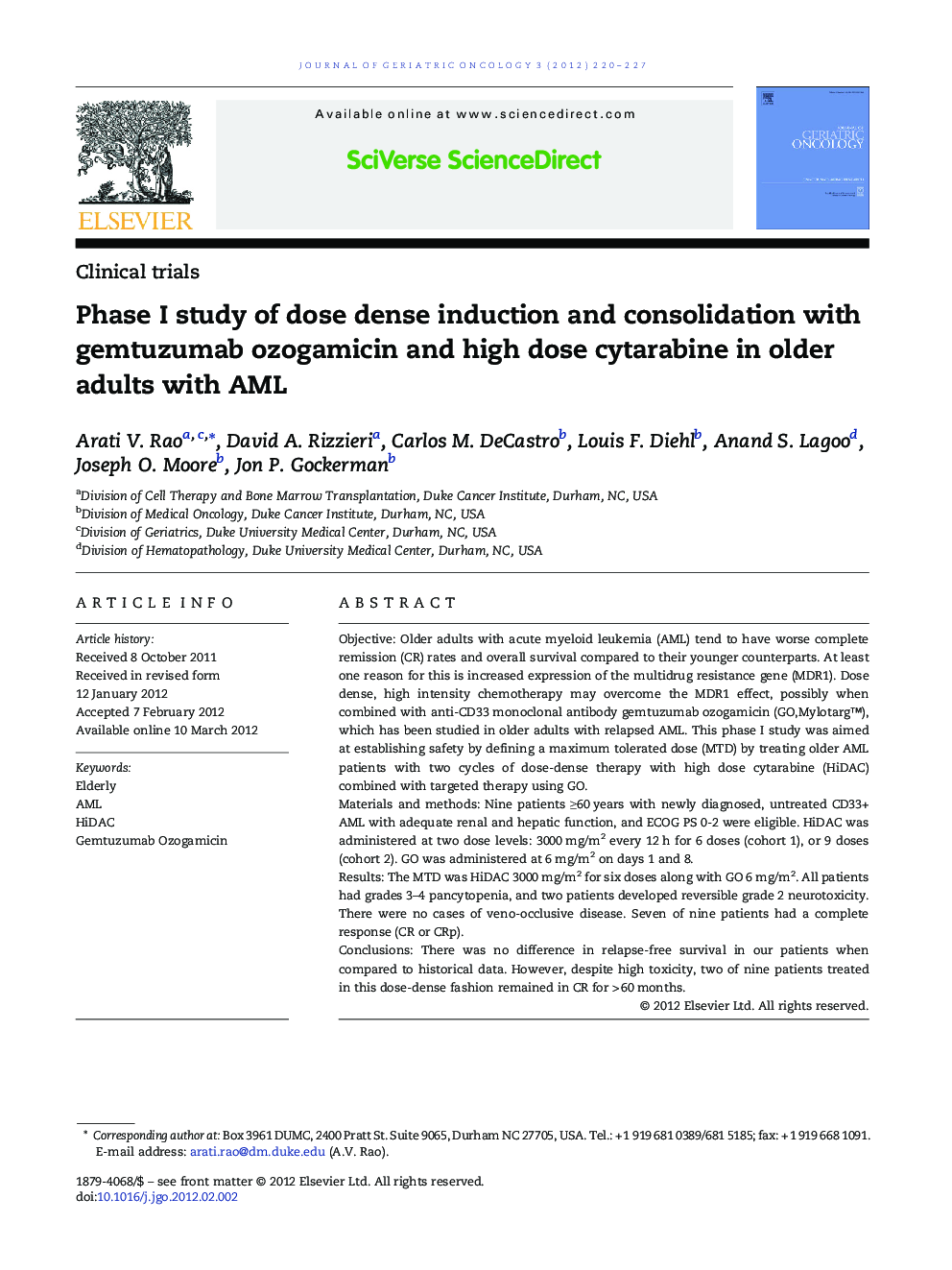| Article ID | Journal | Published Year | Pages | File Type |
|---|---|---|---|---|
| 1912640 | Journal of Geriatric Oncology | 2012 | 8 Pages |
ObjectiveOlder adults with acute myeloid leukemia (AML) tend to have worse complete remission (CR) rates and overall survival compared to their younger counterparts. At least one reason for this is increased expression of the multidrug resistance gene (MDR1). Dose dense, high intensity chemotherapy may overcome the MDR1 effect, possibly when combined with anti-CD33 monoclonal antibody gemtuzumab ozogamicin (GO,Mylotarg™), which has been studied in older adults with relapsed AML. This phase I study was aimed at establishing safety by defining a maximum tolerated dose (MTD) by treating older AML patients with two cycles of dose-dense therapy with high dose cytarabine (HiDAC) combined with targeted therapy using GO.Materials and methodsNine patients ≥60 years with newly diagnosed, untreated CD33+ AML with adequate renal and hepatic function, and ECOG PS 0-2 were eligible. HiDAC was administered at two dose levels: 3000 mg/m2 every 12 h for 6 doses (cohort 1), or 9 doses (cohort 2). GO was administered at 6 mg/m2 on days 1 and 8.ResultsThe MTD was HiDAC 3000 mg/m2 for six doses along with GO 6 mg/m2. All patients had grades 3–4 pancytopenia, and two patients developed reversible grade 2 neurotoxicity. There were no cases of veno-occlusive disease. Seven of nine patients had a complete response (CR or CRp).ConclusionsThere was no difference in relapse-free survival in our patients when compared to historical data. However, despite high toxicity, two of nine patients treated in this dose-dense fashion remained in CR for > 60 months.
